It’s September, so you know what that means!
Well, okay, maybe you’re new here (and if you are, welcome and thank you! I hope you stick around). My super awesome, supportive (and patient) wife loves dragons. She works in IT, and thus spends a great deal of time stuck in front of a computer monitor. Years ago I had the brilliant idea to start drawing dragons for her birthday that she can use as her wallpaper on her monitor, and an annual tradition was born. The general idea that has developed over the years I will eventually (I hope) turn into an art book, kind of like a fantastical field guide (think Terryl Whitlatch’s amazing “The Wildlife of Star Wars”). There’s this highly advanced dragon species that becomes space-faring. They leave their home world due to war or a dying star or something, and settle on a new planet that can support them. They do some terraforming as it’s otherwise devoid of what they would consider life and eventually evolution takes place (I haven’t worked out if it’s a natural process or something they instigate in order to create a thriving ecosystem). Basically, everything on the planet will have the same common ancestor: a dragon.
That’s the idea, anyway. The early illustrations were done in color, but my wife tells me she really prefers my black and white, more pen and ink type work, so I stopped colorizing several years ago. It adds another layer of challenge. Conventional art wisdom generally says working in black and white is a bit easier and less confusing than also dealing with colors. I think there’s truth to that, but without color, you have to figure out how to separate elements with more limitations. Sometimes it’s hard not to have things blend together because they are the same shade of grey, so you have to manage your tones better.
Anywhat, here’s this year’s offering:
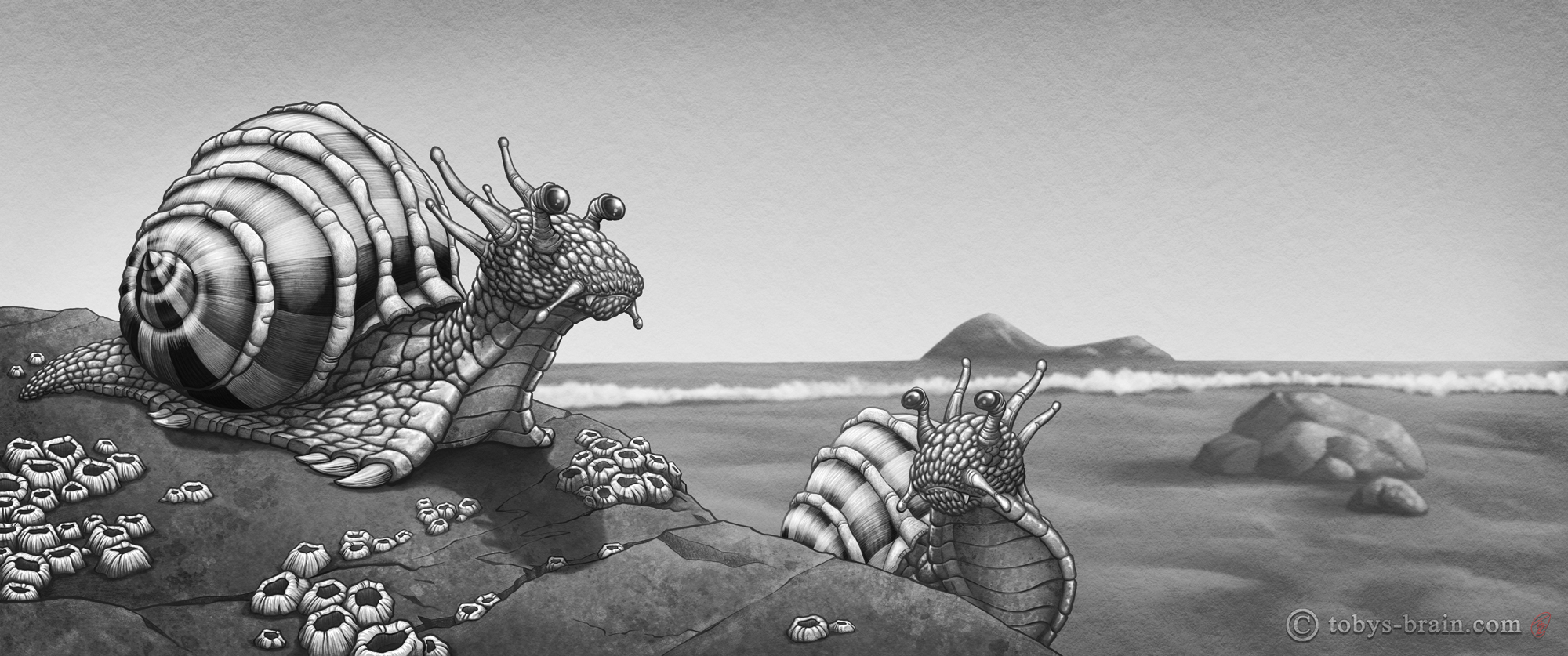
This year’s dragon for my wife’s birthday clocked in at almost 30 hours. It’s the most complex illustration I’ve done for this annual tradition to date. I was originally going to go with a different animal to chimerize (yes, I made “chimera” a verb), but one night, unable to sleep (as usual) I randomly thought “what about a snail?” I keep a running list of potential dragon hybrids, but snail wasn’t even on it. It conjured up a strong enough mental image, even though it was paradoxically very vague on the specifics and details, that I knew that’s what I was going to do.
I still struggled a lot once I started drawing, though. There were lots of details I had a hard time figuring out. Despite how rendered they are, all these dragon illustrations are still kind of first drafts. They’re kind of initial, stream-of-consciousness, figuring-it-out-as-I-go designs. Sometimes they work, sometimes they’re too close to the animal they’ve been mashed up with, sometimes they’re a little too dragon. Which features should be kept from each source? How can I take them a step further and be creative? It’s a fun challenge, especially in the initial stages, but as usual, I get caught in the details, textures, and overall rendering too early (though I’m getting better) and sometimes I feel the finished chimera is a little to patchwork with elements too distinct from the source animal.
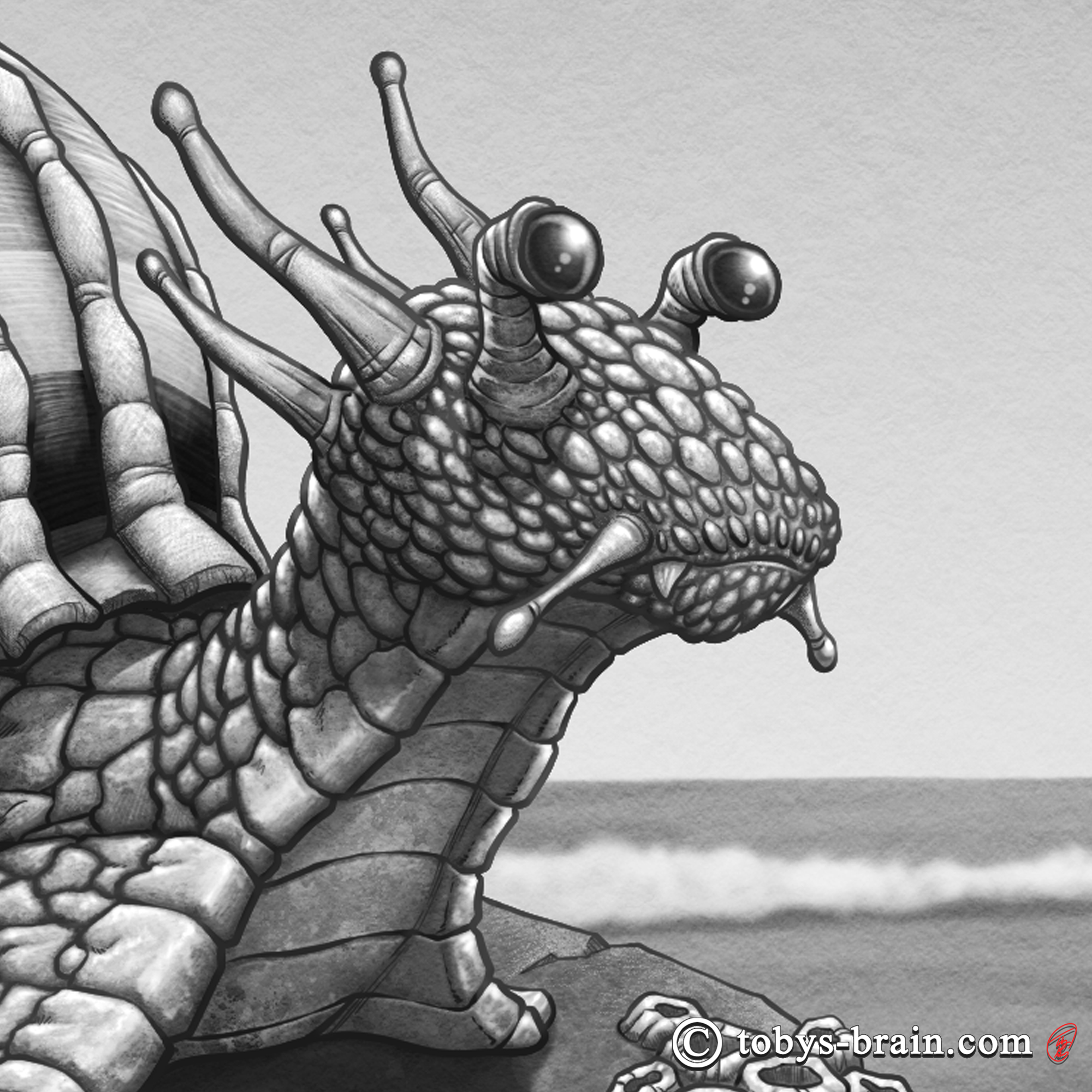
Close up of the main snail dragon, horns and whiskers evolve into softer, antennae-like structures, eyes protrude from stalks. It still has noticeable teeth and a distinct mouth. In my image reference searching, I did notice a lot of larger snails (I think mostly land snails) have a very scale-like skin texture, which was interesting. I think these guys aren’t small, at least not compared to actual snails. I think they’d be more like house cat sized.
As I mentioned, I still consider them somewhat like first drafts. I don’t spend time doing iterations before settling on the final form, I go with the flow. If and when I turn these into the field guide book thing that I’ve talked about, I will revisit all of them to some degree. I want them to be influenced by and reminiscent of species we have on earth, but I’d like to push them into new territory, too, to think about how a dragon-based species could thrive in different ecological zones. I want to take inspiration from how nature solved various problems and figure out how that might look somewhere else with a different starting point.
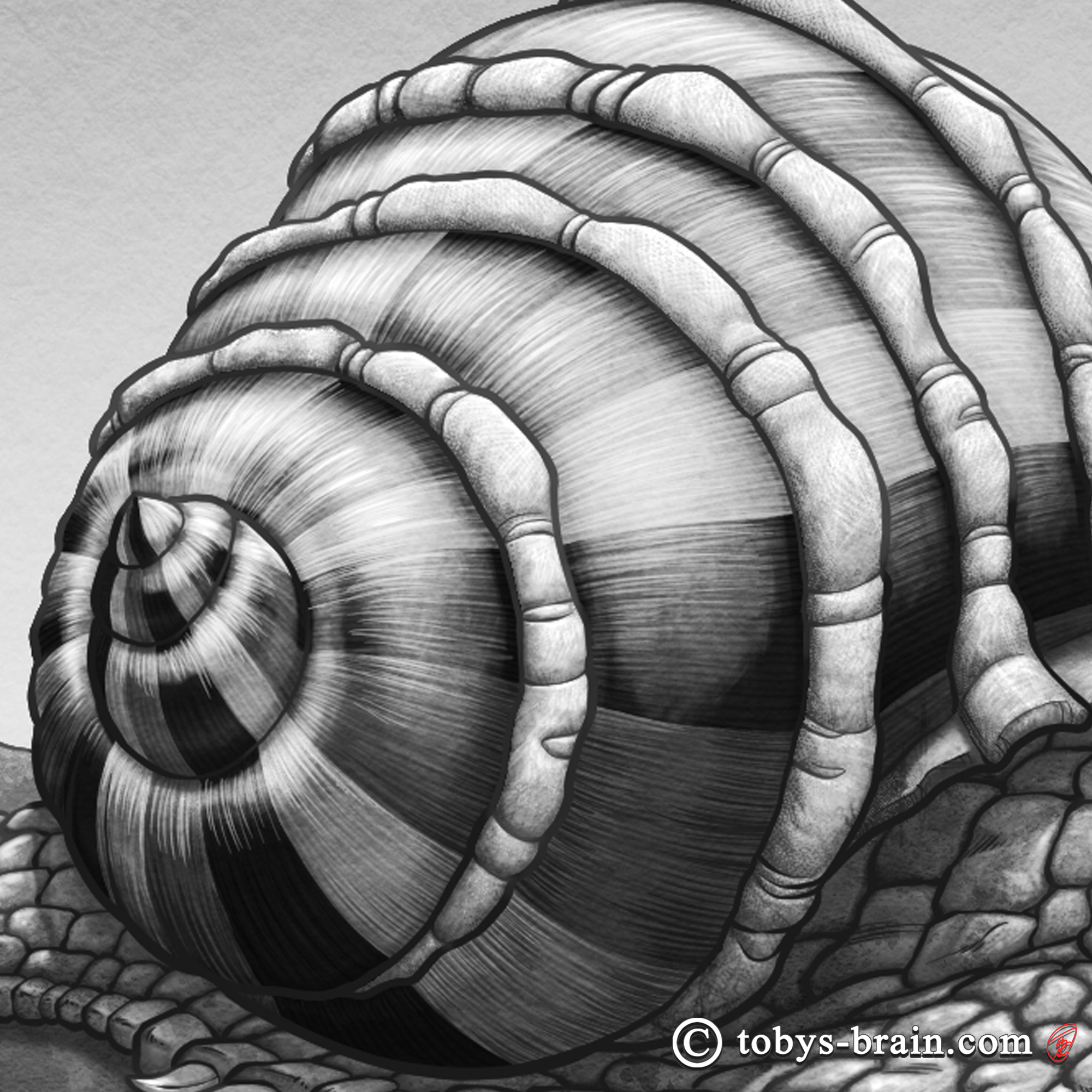
The shell design was challenging. I didn’t want it to be just a snail shell. I ended up drawing inspiration from some conch shells, as well, but it could still be pushed further. I originally thought about a shell-like structure evolving from the wing structures, but couldn’t figure out how that would work, or why for that matter. I did find an interesting close up picture of a snail shell that had some neat color banding on it. I thought it might be a way to add some visual interest, but it does read somewhat like a beach ball.
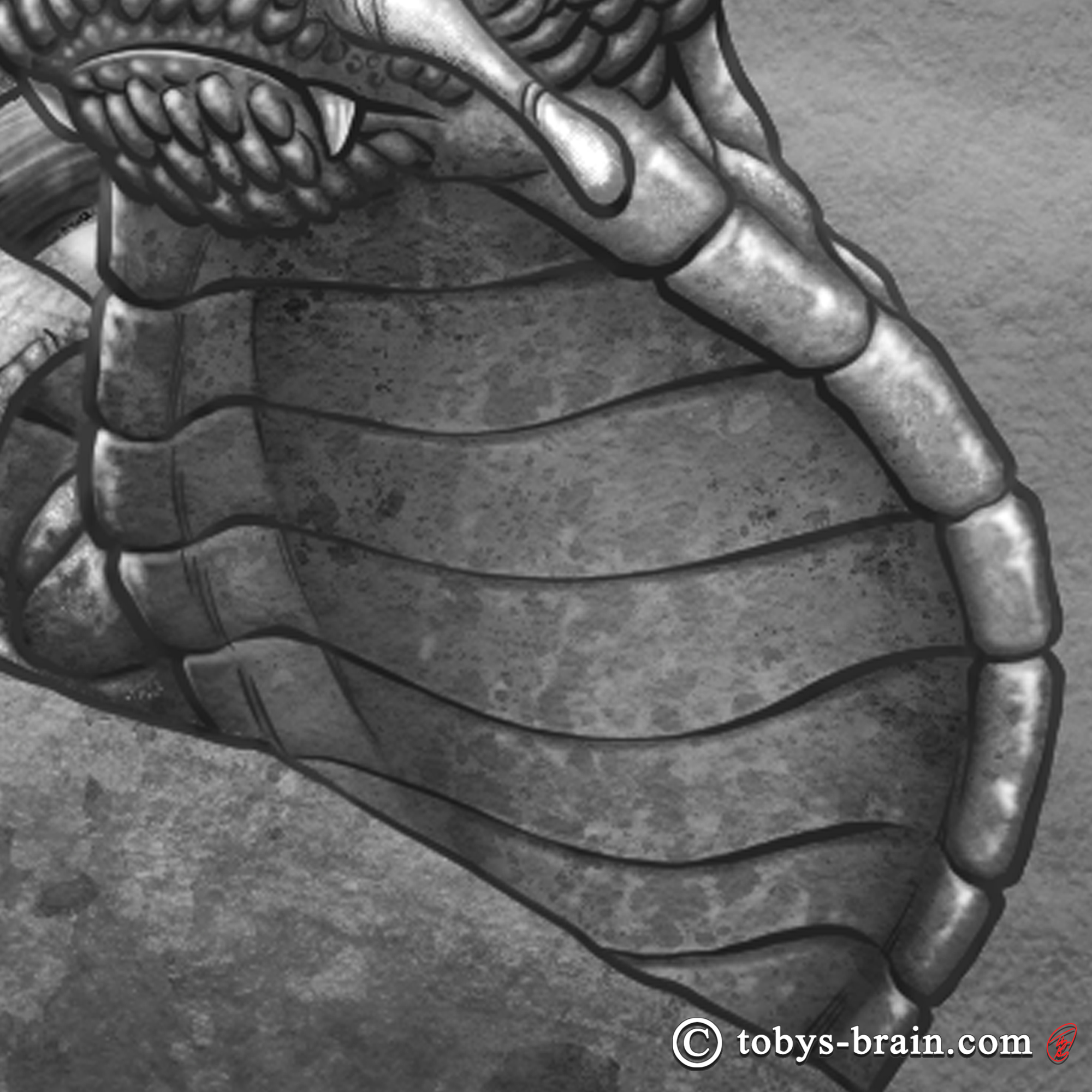
I was pretty happy with the way the volume and texture on the second snail’s chest/neck turned out. The texture was mostly a stock water color splatter brush in Clip Studio that I manipulated the spacing on a little. It’s a brush and texture I’m thinking of tweaking and experimenting with some more. Tough not to overuse.
If you’d like to watch the timelapse of this here Snail Dragon guy, you can head over to my YouTube channel.
I had an additional challenge this year, which I’ve talked about several times on other platforms (to the point where I worry it comes off like I’m questing for sympathy, which I’m not. Things could be far, far worse). At the end of July, I had a small accident while working with some rigid insulation for a house project. I wound up dragging a six inch serrated knife (designed for cutting the insulation, supposedly) across my left thumb, just above the big joint. It was stupid mistake, I know better, but it happened. I saw my tendon. I saw it was damaged. The ER didn’t really take me seriously, just stitched me up and sent me home. A week later I had the stitches removed and complained about the persistent swelling and lack of mobility. I was told to wait for it to fully heal, then have it looked at. A week later, while accompanying my wife to an appointment, my wife asked her doctor to look at my thumb. She immediately set me up with an MRI, at this point, three weeks out from the accident. My tendon was indeed fully severed, and I went to an orthopedic doctor another week later. He told me he had to refer me to a hand specialist, which took another week. Finally, six and a half weeks after I absent mindedly tried to cut off my thumb, I had surgery. Fortunately, the surgeon was able to reattach the tendon ends, despite it having been so long (the condition degrades and often won’t hold the sutures), which meant he didn’t have to harvest a tendon from elsewhere in my hand. I’m on the long road to recovery now. I have to rethink the way I work for a while, because even though I’m right handed, I use my left hand a lot when I’m working traditionally or digitally (and typing has been a particular challenge). I also have to figure out how I will continue to workout so I don’t lose my mind. But, it could be so much worse (and I know a few people personally in that category).
Anymonkeys, I have some catching up to do on Inktober 52 now, and Inktober 2024 is right around the corner. I’m still trying to work on the “It’s Plunger Monkey Dynamo Time!” graphic novel, but it has suffered the most with all the interruptions of the last few months. Of course, I still have a massive laundry list of other art (and sewing) projects, but those are the main ones at the moment.

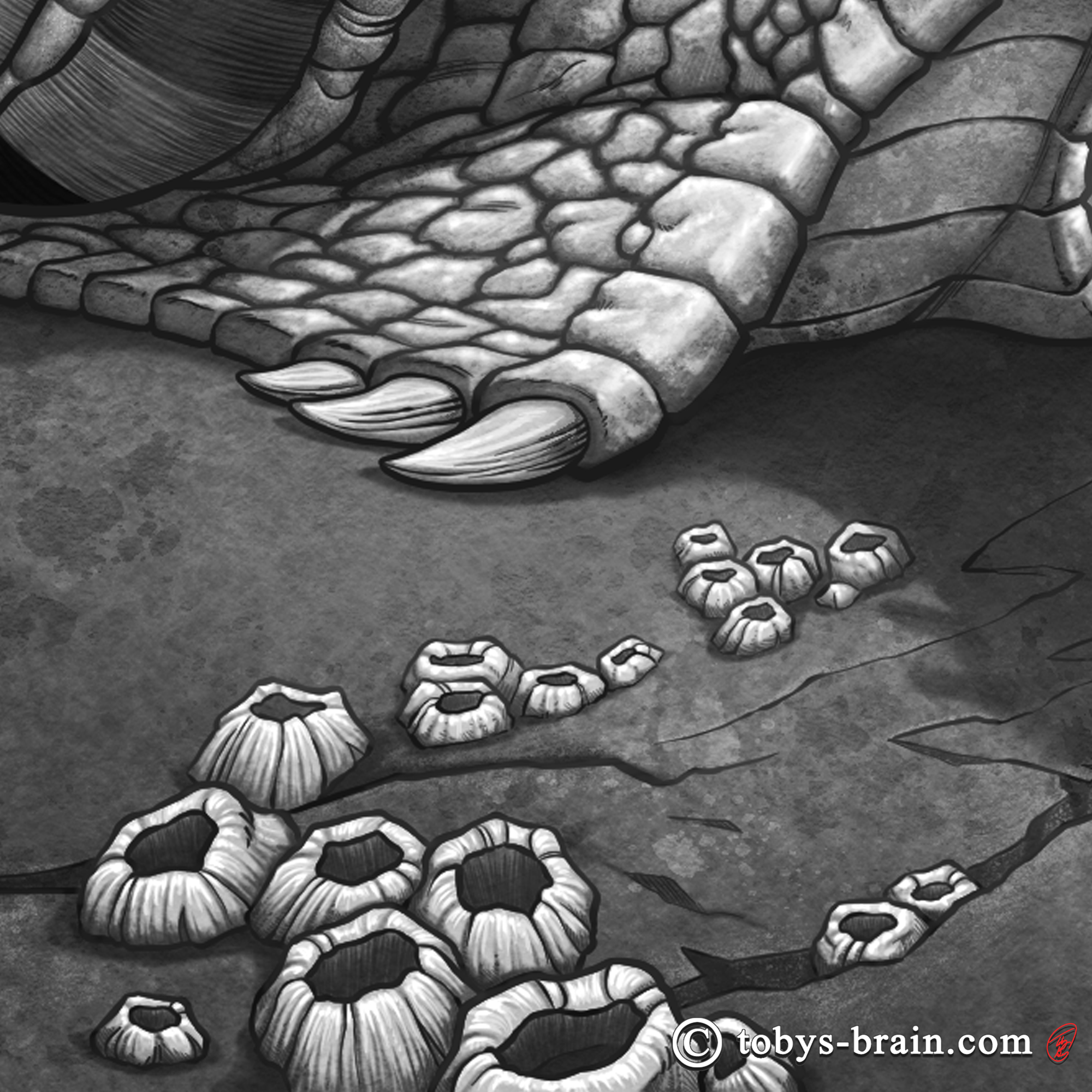



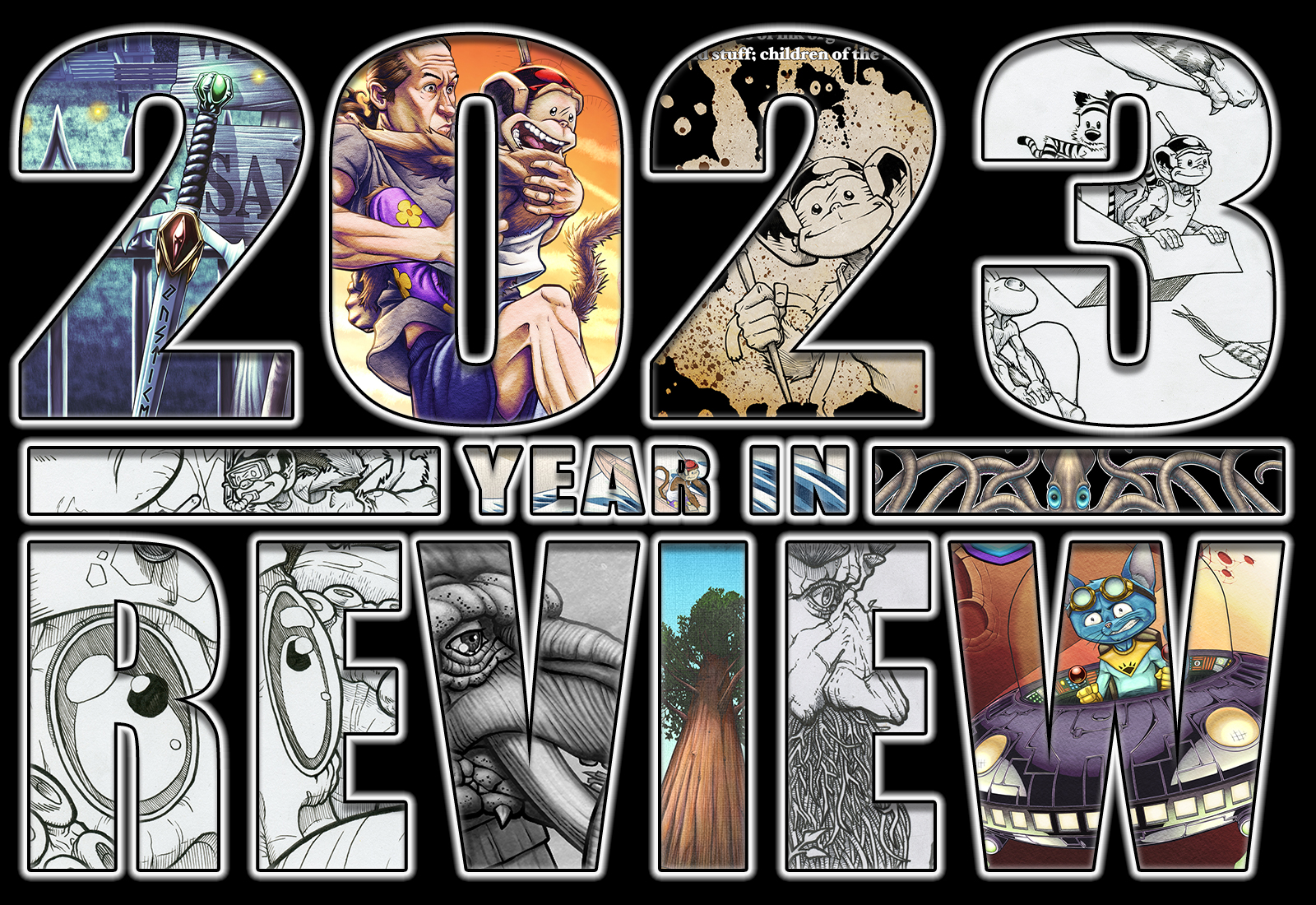
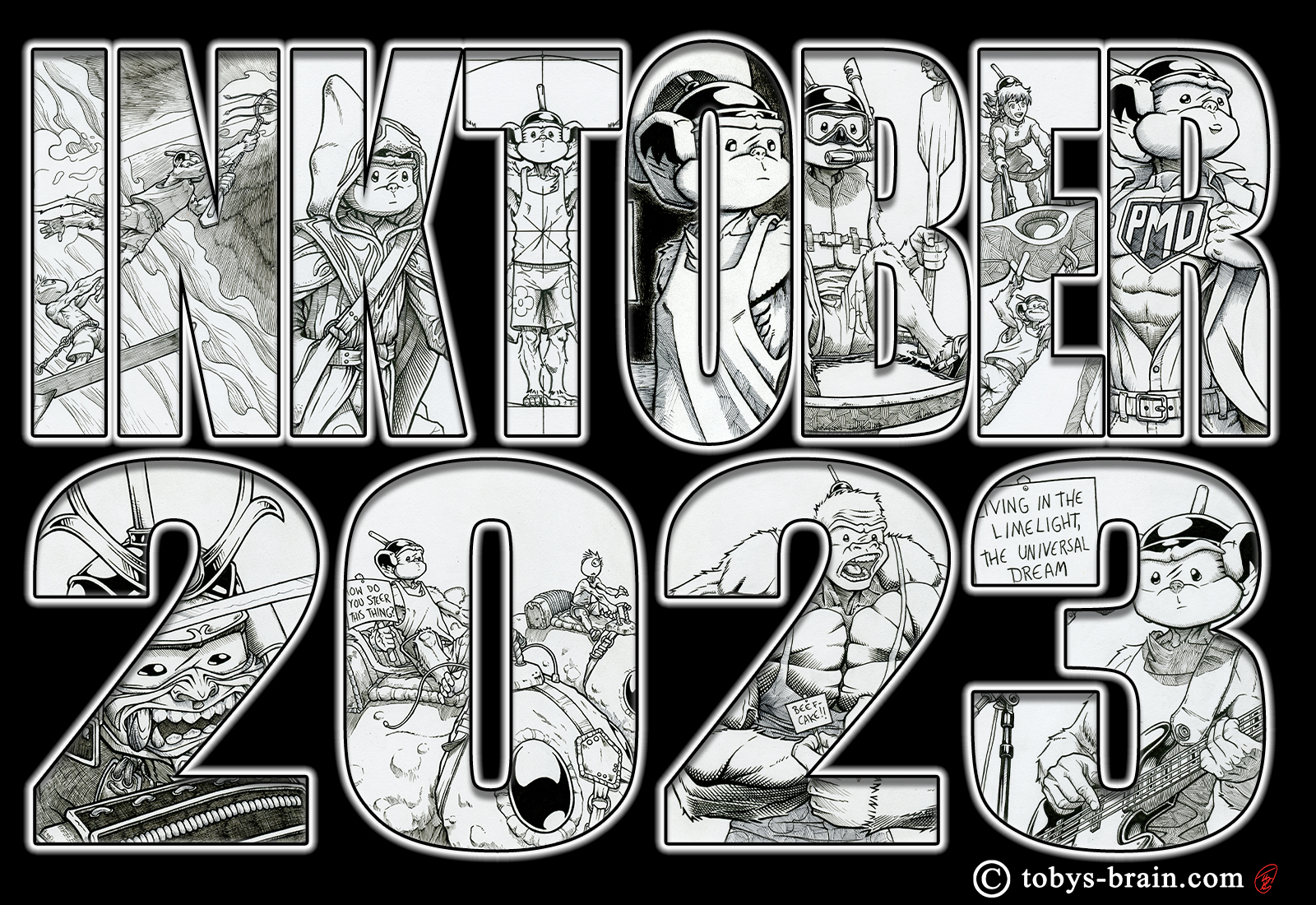
Please let me know what you think, it makes my brain happy.